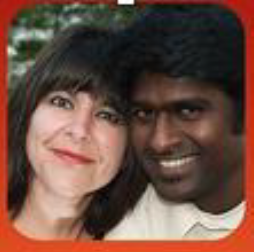3.2: Description des personnalités
- Page ID
- 109199
\( \newcommand{\vecs}[1]{\overset { \scriptstyle \rightharpoonup} {\mathbf{#1}} } \)
\( \newcommand{\vecd}[1]{\overset{-\!-\!\rightharpoonup}{\vphantom{a}\smash {#1}}} \)
\( \newcommand{\id}{\mathrm{id}}\) \( \newcommand{\Span}{\mathrm{span}}\)
( \newcommand{\kernel}{\mathrm{null}\,}\) \( \newcommand{\range}{\mathrm{range}\,}\)
\( \newcommand{\RealPart}{\mathrm{Re}}\) \( \newcommand{\ImaginaryPart}{\mathrm{Im}}\)
\( \newcommand{\Argument}{\mathrm{Arg}}\) \( \newcommand{\norm}[1]{\| #1 \|}\)
\( \newcommand{\inner}[2]{\langle #1, #2 \rangle}\)
\( \newcommand{\Span}{\mathrm{span}}\)
\( \newcommand{\id}{\mathrm{id}}\)
\( \newcommand{\Span}{\mathrm{span}}\)
\( \newcommand{\kernel}{\mathrm{null}\,}\)
\( \newcommand{\range}{\mathrm{range}\,}\)
\( \newcommand{\RealPart}{\mathrm{Re}}\)
\( \newcommand{\ImaginaryPart}{\mathrm{Im}}\)
\( \newcommand{\Argument}{\mathrm{Arg}}\)
\( \newcommand{\norm}[1]{\| #1 \|}\)
\( \newcommand{\inner}[2]{\langle #1, #2 \rangle}\)
\( \newcommand{\Span}{\mathrm{span}}\) \( \newcommand{\AA}{\unicode[.8,0]{x212B}}\)
\( \newcommand{\vectorA}[1]{\vec{#1}} % arrow\)
\( \newcommand{\vectorAt}[1]{\vec{\text{#1}}} % arrow\)
\( \newcommand{\vectorB}[1]{\overset { \scriptstyle \rightharpoonup} {\mathbf{#1}} } \)
\( \newcommand{\vectorC}[1]{\textbf{#1}} \)
\( \newcommand{\vectorD}[1]{\overrightarrow{#1}} \)
\( \newcommand{\vectorDt}[1]{\overrightarrow{\text{#1}}} \)
\( \newcommand{\vectE}[1]{\overset{-\!-\!\rightharpoonup}{\vphantom{a}\smash{\mathbf {#1}}}} \)
\( \newcommand{\vecs}[1]{\overset { \scriptstyle \rightharpoonup} {\mathbf{#1}} } \)
\( \newcommand{\vecd}[1]{\overset{-\!-\!\rightharpoonup}{\vphantom{a}\smash {#1}}} \)
\(\newcommand{\avec}{\mathbf a}\) \(\newcommand{\bvec}{\mathbf b}\) \(\newcommand{\cvec}{\mathbf c}\) \(\newcommand{\dvec}{\mathbf d}\) \(\newcommand{\dtil}{\widetilde{\mathbf d}}\) \(\newcommand{\evec}{\mathbf e}\) \(\newcommand{\fvec}{\mathbf f}\) \(\newcommand{\nvec}{\mathbf n}\) \(\newcommand{\pvec}{\mathbf p}\) \(\newcommand{\qvec}{\mathbf q}\) \(\newcommand{\svec}{\mathbf s}\) \(\newcommand{\tvec}{\mathbf t}\) \(\newcommand{\uvec}{\mathbf u}\) \(\newcommand{\vvec}{\mathbf v}\) \(\newcommand{\wvec}{\mathbf w}\) \(\newcommand{\xvec}{\mathbf x}\) \(\newcommand{\yvec}{\mathbf y}\) \(\newcommand{\zvec}{\mathbf z}\) \(\newcommand{\rvec}{\mathbf r}\) \(\newcommand{\mvec}{\mathbf m}\) \(\newcommand{\zerovec}{\mathbf 0}\) \(\newcommand{\onevec}{\mathbf 1}\) \(\newcommand{\real}{\mathbb R}\) \(\newcommand{\twovec}[2]{\left[\begin{array}{r}#1 \\ #2 \end{array}\right]}\) \(\newcommand{\ctwovec}[2]{\left[\begin{array}{c}#1 \\ #2 \end{array}\right]}\) \(\newcommand{\threevec}[3]{\left[\begin{array}{r}#1 \\ #2 \\ #3 \end{array}\right]}\) \(\newcommand{\cthreevec}[3]{\left[\begin{array}{c}#1 \\ #2 \\ #3 \end{array}\right]}\) \(\newcommand{\fourvec}[4]{\left[\begin{array}{r}#1 \\ #2 \\ #3 \\ #4 \end{array}\right]}\) \(\newcommand{\cfourvec}[4]{\left[\begin{array}{c}#1 \\ #2 \\ #3 \\ #4 \end{array}\right]}\) \(\newcommand{\fivevec}[5]{\left[\begin{array}{r}#1 \\ #2 \\ #3 \\ #4 \\ #5 \\ \end{array}\right]}\) \(\newcommand{\cfivevec}[5]{\left[\begin{array}{c}#1 \\ #2 \\ #3 \\ #4 \\ #5 \\ \end{array}\right]}\) \(\newcommand{\mattwo}[4]{\left[\begin{array}{rr}#1 \amp #2 \\ #3 \amp #4 \\ \end{array}\right]}\) \(\newcommand{\laspan}[1]{\text{Span}\{#1\}}\) \(\newcommand{\bcal}{\cal B}\) \(\newcommand{\ccal}{\cal C}\) \(\newcommand{\scal}{\cal S}\) \(\newcommand{\wcal}{\cal W}\) \(\newcommand{\ecal}{\cal E}\) \(\newcommand{\coords}[2]{\left\{#1\right\}_{#2}}\) \(\newcommand{\gray}[1]{\color{gray}{#1}}\) \(\newcommand{\lgray}[1]{\color{lightgray}{#1}}\) \(\newcommand{\rank}{\operatorname{rank}}\) \(\newcommand{\row}{\text{Row}}\) \(\newcommand{\col}{\text{Col}}\) \(\renewcommand{\row}{\text{Row}}\) \(\newcommand{\nul}{\text{Nul}}\) \(\newcommand{\var}{\text{Var}}\) \(\newcommand{\corr}{\text{corr}}\) \(\newcommand{\len}[1]{\left|#1\right|}\) \(\newcommand{\bbar}{\overline{\bvec}}\) \(\newcommand{\bhat}{\widehat{\bvec}}\) \(\newcommand{\bperp}{\bvec^\perp}\) \(\newcommand{\xhat}{\widehat{\xvec}}\) \(\newcommand{\vhat}{\widehat{\vvec}}\) \(\newcommand{\uhat}{\widehat{\uvec}}\) \(\newcommand{\what}{\widehat{\wvec}}\) \(\newcommand{\Sighat}{\widehat{\Sigma}}\) \(\newcommand{\lt}{<}\) \(\newcommand{\gt}{>}\) \(\newcommand{\amp}{&}\) \(\definecolor{fillinmathshade}{gray}{0.9}\)In this section, you will learn how to describe your family members' physical appearances and personalities.
Listen to the audio clips that follow on this page to hear the French pronunciation of vocabulary and examples presented.
On étudie !
| Genre | Terminaison au singulier |
|---|---|
| masculin | — |
| féminin | -e |
Pour en savoir plus.
Most French adjectives ending in -e are feminine. Here are some common "irregular" endings for feminine adjectives:
| Genre | Terminaison | Terminaison | Terminaison | Terminaison | Terminaison | Terminaison |
|---|---|---|---|---|---|---|
| Masculin | -if | -eux, -eur | -ien | -as, -os, -on | -l | -(i)er |
| Féminin | -ive | -euse | -ienne | -asse, -osse, -onne | -lle | -(i)ère |
Pour en savoir plus.
| Singulier | Pluriel |
|---|---|
| — | -s |
| Singulier | Pluriel |
|---|---|
|
-eau, -eu |
-eaux, -eux |
| -al, -ail | -aux |
Pour en savoir plus.
| Sujet | Être | Adverbes d'intensité : assez, très, bien, trop, tellement, vraiment, etc.) |
Adjectif |
|---|---|---|---|
| Cette personne | est | très | belle. |
Pour en savoir plus.
| Beauty | Age | Goodness | Size |
|---|---|---|---|
| beau, bel belle |
vieux, vieil vieille |
bon bonne |
petit(e) ≠ grand(e) |
| joli(e) | jeune | mauvais(e) | gros(se) |
| nouveau, nouvel nouvelle |
long(ue) |
Pour en savoir plus.
In Unité 1, you saw some adjectives used to describe people's physical appearance. Here is an expanded list:
| Français | Anglais |
|---|---|
| joli(e) | pretty |
| beau, belle | handsome, beautiful |
| laid(e) | ugly |
| mignon(nne)* | cute |
| jeune | young |
| vieux, vieille | old, elderly |
| gros(se)* | fat |
| maigre | thin |
| mince | thin, slender |
| petit(e) | small, little, short in height |
| de taille moyenne | average height |
| grand(e) | tall, big |
| long(ue)* | long |
| court(e) | short in length |
| fort(e) | strong (or hefty) |
| faible | weak |
| roux, rousse* | redheaded |
| blond(e) | blond |
| brun(e) | dark-haired |
*mignon, mignonne; vieux, vieille, gros, grosse, long, longue, and roux, rousse have irregular gender changes.
| Français | Anglais |
|---|---|
|
Il, elle a les cheveux ________. longs châtains bruns blonds courts frisés mi-longs roux |
He, she has ________ hair. long (light) brown (dark) brown blond short curly medium-length red |
|
Il, elle a les yeux ________. bleus verts marron* bruns noisette* |
He, she has ________ eyes. blue green (light) brown (dark) brown hazel |
|
Il, elle porte ________. des lunettes un chapeau, etc. |
He, she is wearing ________. glasses a hat etc. |
|
Il, elle a ________. une moustache une barbe une tache de naissance une tache de rousseur |
He, she has ________. a mustache a beard a birth mark a freckle |
|
Il, elle est ________. sourd(e) aveugle muet, muette |
He, she is ________. deaf blind mute |
* In French, when a common noun is use as an adjective, like in the case of marron or noisette it does not take an s for plural. Click here to read about other invariable adjectives of color.
Les yeux marron (Brown eyes)
Les yeux noisette (Hazel eyes)
For more on body parts see: 3.3 Le corps humain
Ils sont comment les membres de ta famille ?
Now we will talk about adjectives we can use to describe the personalities of our families, our friends and ourselves. Pay attention to gender and number variations of each adjective. For example:
| masculin | féminin | |
|---|---|---|
| singulier |
gentil un homme gentil |
gentille une femme gentille |
| pluriel |
gentils des hommes gentils |
gentilles des femmes gentilles |
Adjectifs descriptifs : Les traits de personnalité
| Français | Anglais | Exemples |
|---|---|---|
| sympathique, sympa | nice, likable, pretty nice, friendly, sympathetic | C’est un hôtel sympa. |
| gentil(le) | kind, gentle, cute, charming | C’est une gentille petite fille. |
| antipathique | unpleasant | Marcel est antipathique. |
| amusant(e) | funny |
C'est une comédie amusante. C'est un livre amusant. |
| drôle | funny | Le roman est drôle. |
| rigolo(te) | funny | Elle est tellement rigolote ! |
| intelligent(e) | intelligent | François Rastier est très intelligent. |
| sage | prudent, cautious, judicious | Le juge est sage. |
| intéressant(e) | interesting | C'est un ouvrage intéressant. |
| (im)patient(e) | (im)patient | Je ne suis pas une personne patiente. |
| sociable | sociable | L’homme est un animal sociable. |
| timide | timid, shy | Il est timide avec les femmes. |
| réservé(e) | reserved | Ma sœur est très réservée. |
| organisé(e) | organized | Je ne suis pas du tout organisé(e). |
| dynamique | energetic | C’est un homme très dynamique. |
| strict(e) | strict | Le prof d'économie est super strict. |
| fort(e) | strong, skilled | Léon est vraiment grand et fort. |
| cool | cool (anglicisme) | Ce mec est trop cool. |
| charmant(e) | charming | La princesse est assez charmante. |
| poli(e) | polite | C’est un homme extrêmement poli. |
| enthousiaste | enthusiastic | J'aime les voyageurs enthousiastes. |
| idéaliste | idealistic | Ma mère est idéaliste. |
| réaliste | realistic | Ce philosophe est très réaliste. |
| optimiste | optimistic | Mon père est super optimiste. |
| pessimiste | pessimistic | Je ne suis pas pessimiste. |
| méchant(e) | mean | Elle rencontre le grand méchant loup. |
| cruel(le) | cruel | La sorcière est cruelle. |
| calme | calm | La mer est calme aujourd'hui. |
| tranquille | calm, quiet |
Cet enfant est très tranquille. La mer est tranquille. |
| différent(e) | different | Tout le monde est diffèrent. |
| inséparable | inseparable | Les deux amis sont inséparables. |
| jaloux, jalouse | jealous | Mon chien est jaloux de mon chat. |
| The adjectives below are irregular in their gender and number agreement. Pay close attention to the ending changes. | ||
| curieux, curieuse | curious | Elle a un esprit curieux. |
| généreux, généreuse | generous | Ma tante est généreuse. |
| nerveux, nerveuse | nervous | Pablo est nerveux le jour d'un examen |
| sérieux, sérieuse | serious |
C'est un homme sérieux. C'est une conversation sérieuse. |
| heureux, heureuse | happy | Mon frère est heureux. |
| malheureux, malheureuse | unhappy, miserable | Mon chien est malheureux à la maison. |
| affectueux, affectueuse | affectionate | Ma mère est très affectueuse. |
| ambitieux, ambitieuse | ambitious | Ma sœur cadette est assez ambitieuse. |
| décisif, décisive | decisive | C’est un moment décisif de la vie. |
| fou, folle | crazy | Ma copine est parfois folle. |
| fier, fière | proud | Je suis fière de mes enfants. |
| intellectuel, intellectuelle | intellectual | Il a des facultés intellectuelles incroyables. |
| nouveau, nouvelle | new | J’ai une nouvelle voiture. |
| naïf, naïve | naive | Les enfants sont-ils naïfs parfois ? |
| vieux, vieille | old, elderly | Nous habitons un vieil appartement. |
| discret, discrète | discreet | C’est bien d’avoir des amis discrets. |
Study the Quizlet vocabulary flashcards. Listen and repeat the French pronunciation.
The masculine forms of the adjectives nouveau, vieux and beau will change when the noun that follows it begins with a vowel or a silent h, as follows: un vieil homme, un bel homme, un un nouvel homme, un vieil ami, un bel écureuil, un nouvel appartement.
As you can see in the examples above, many of these adjectives can describe non-human nouns like other animals, places, events and certain objects. For example: un chien antipathique (an unfriendly dog) une ville charmante (a charming city), une soirée amusante (a fun party), et un livre intéressant (an interesting book).
Regardez ces vidéos pour pratiquer votre vocabulaire :
| Français | Anglais |
|---|---|
| mon, ma, mes | my |
| ton, ta, tes | your (familiar or singular) |
| son, sa, ses | his or her or its |
| notre, nos | our |
| votre, vos | your (formel or pluriel) |
| leur, leurs | their |
| Français | Anglais |
|---|---|
| Le, la, l', les + membre de la famille 1 + de + adjectif possessif + membre de la famille 2 | The + family member 1 + of + possessive adjective + family member 2 |
Pour en savoir plus.
On pratique !
Activité A
Il sont comment tes parents ?
Étudiant(e) 1: Ils sont comment tes parents ?
Étudiant(e) 2: Ils sont sympas. Mon père est généreux et ma mère est gentille.
Pratiquez ➔
Étudiant(e) 1: Ils sont comment tes parents ?
Étudiant(e) 2: Ils sont ________. Mon père est ________ et ma mère est ________.
Activité B
Décris ta famille. Describe 2-3 members of your immediate family with the various physical and personality traits you have learned. Then add more information such as: their name, where they are from, their origin, what they wear, what they like to do, and what they do for a living. Present them to your classmates.
Quelques mots utiles (some useful words) : avocat(e), dentiste, médecin, architecte, ingénieur, journaliste, professeur, instuteur, institutrice, astronaute, policier, soldat.
This professor describes his parents in as much detail as possible.
To practice, you can listen and repeat. Then, see if you can describe 2 of your own family members and add as much detail as possible.
Modèle :
Je vous présente mon père :
Il s'appelle Robert.
Il est de Temecula Il est d'origine mexicaine.
Il est grand et fort.
Il est intelligent et gentil.
Il a les cheveux bruns et les yeux verts.
Je vous présente ma mère :
Elle s'appelle Sharon.
Elle est d'origine irlandaise.
Elle est jolie et petite.
Elle est amusante.
Elle a les cheveux blonds.
Elle porte un chapeau.
Elle est artiste.
Elle aime regarder des films.
Activité C
Décris tes amis. Describe some of your friends and share your descriptions with the class. Add some intensity to your descriptions with adverbes of intensity like très, trop, super, assez, etc. (see above). Be sure to use the possessive pronouns mon, ma, mes.
Modèle :
Mes amis sont un peu...
Ma meilleure amie est très...
Mon ami Thierry est super....
Vocabulaire utile :
| Français | Anglais |
|---|---|
| ami(e) | friend |
| copain, copine | friend, (sometimes: boyfriend, girlfriend) |
| petit ami(e) | boyfriend, girlfriend |
| meilleur(e) ami(e) | best friend |
| camarade de classe | classmate |
| colocataire | house-mate |
Activité D
Décris-toi. Use at least 6 adjectives to describe yourself. Tell us anything else you want to (for example, quel âge tu as, ta spécialisation, etc.)
Modèle :
Je suis grand, timide et intelligent.
J'ai 20 ans.
J'étudie le français et le marketing. Etc.
The verb ressembler (à). To talk about family resemblances, you can use the verb ressembler followed by à:
Je ressemble à ma mère. Nous sommes blonds tous les deux.
Mon fils ressemble à mon père.
Mes filles ne ressemblent pas du tout à leur mère.
À qui ressembles-tu ? ________.
Activité E
Qui sont ces gens ? Comment sont-ils ? Describe the people in the pictures below using descriptive adjectives to tell us about their physical appearance and personalities.
| Comment sont-ils ? | Comment sont-ils ? | Comment sont-ils ? | Comment sont-ils ? |
|---|---|---|---|
 |
 |
 |
 |
|
1. Madeleine |
2. Pascal |
3. Lin et Jessica |
4. M. Legrand |
 |
 |
 |
 |
|
5. La famille Bisset |
6. Amy |
7. Morgan |
8. Anne |
 |
 |
 |
 |
|
9. Lisa |
10. Maxine et Asif |
11. Mireille |
12. Djamel |
These images by Geralt, pixabay.com are in the Public Domain, CC0 / Derivatives from the original work
On approfondit !
Use the following resources to type accents and/or search for words:
- Accents: ç, à, é, è, â, ê, î, ô, û, ù, ë, ï, ü
- Dictionnaire français-anglais

